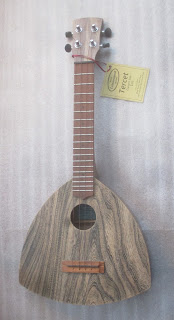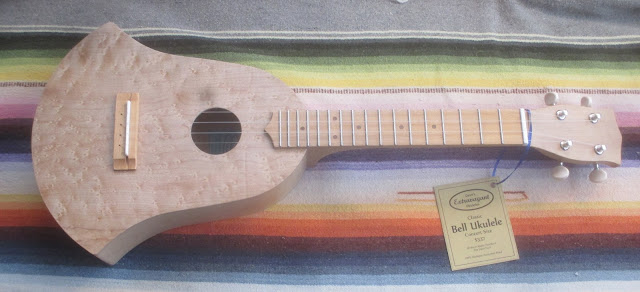This my latest Michi-lele, number 25, all of them sold.
It's my most popular ukulele, representing almost a quarter of my output over the past 6 years plus. I guess I know why--because it is something truly unique and special in a marketplace where you need to offer something something like that when you are an individual craftsman competing against factory producers. It has to be something unique and special because you have to charge at least a few hundred dollars for it to justify your labor on it, while a decent, playable mass-produced instrument can be had for fifty bucks or less.
With this uke, there is also the Michigan angle: A lot of us Michiganders love our state, and we are oddly proud of its distinctive shape (the "mitten"), which happens to be very suitable for a ukulele body--and whattya know, this clever uke very cleverly includes our Upper Peninsula as well, as the head stock.
To be honest, I'm not sure if the idea of making a Michigan-shaped ukulele is totally original with me or not. I have seen a picture of at least one electric guitar with a Michigan mitten body, and I'm not sure if I saw that before or after I made the first Michi-lele. I do know that after I started them, I happened upon a picture of a small collection of ukes that looked pretty much like my Michi-lele, made by someone in northern Michigan. But I did not steal this person's idea--for all I know, he stole it from me. I don't think it matters all that much, because ideas and themes in the wider world of design get stolen and swapped and adapted, etc., all the time.
NOTE: Since I wrote this, some months ago now, there have been more Michi-leles. I love making them, if only because every Michi-lele proves the thesis of my alternative ukulele philosophy: Body shape does not matter, and any wood can be a "tone wood." That is, if one is open is variety in sound and appearance of the musical instrument we call the ukulele.
History has shown--over more than a century now--that the uke player has embraced this attitude--and this is why I love designing and making ukuleles.














